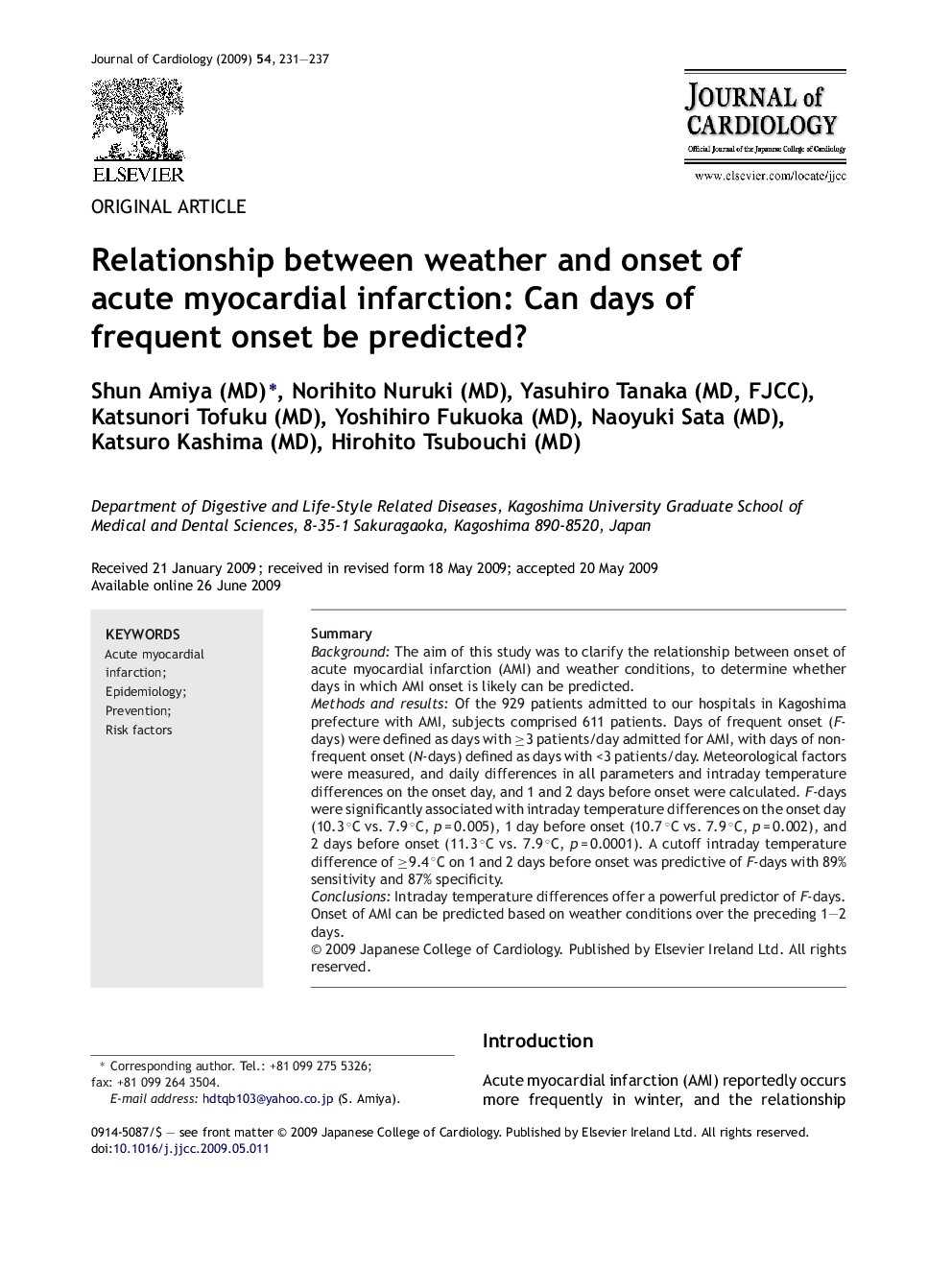| Article ID | Journal | Published Year | Pages | File Type |
|---|---|---|---|---|
| 2963684 | Journal of Cardiology | 2009 | 7 Pages |
SummaryBackgroundThe aim of this study was to clarify the relationship between onset of acute myocardial infarction (AMI) and weather conditions, to determine whether days in which AMI onset is likely can be predicted.Methods and resultsOf the 929 patients admitted to our hospitals in Kagoshima prefecture with AMI, subjects comprised 611 patients. Days of frequent onset (F-days) were defined as days with ≥3 patients/day admitted for AMI, with days of non-frequent onset (N-days) defined as days with <3 patients/day. Meteorological factors were measured, and daily differences in all parameters and intraday temperature differences on the onset day, and 1 and 2 days before onset were calculated. F-days were significantly associated with intraday temperature differences on the onset day (10.3 °C vs. 7.9 °C, p = 0.005), 1 day before onset (10.7 °C vs. 7.9 °C, p = 0.002), and 2 days before onset (11.3 °C vs. 7.9 °C, p = 0.0001). A cutoff intraday temperature difference of ≥9.4 °C on 1 and 2 days before onset was predictive of F-days with 89% sensitivity and 87% specificity.ConclusionsIntraday temperature differences offer a powerful predictor of F-days. Onset of AMI can be predicted based on weather conditions over the preceding 1–2 days.
